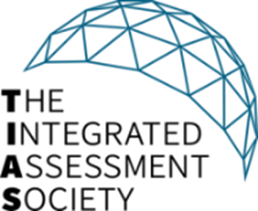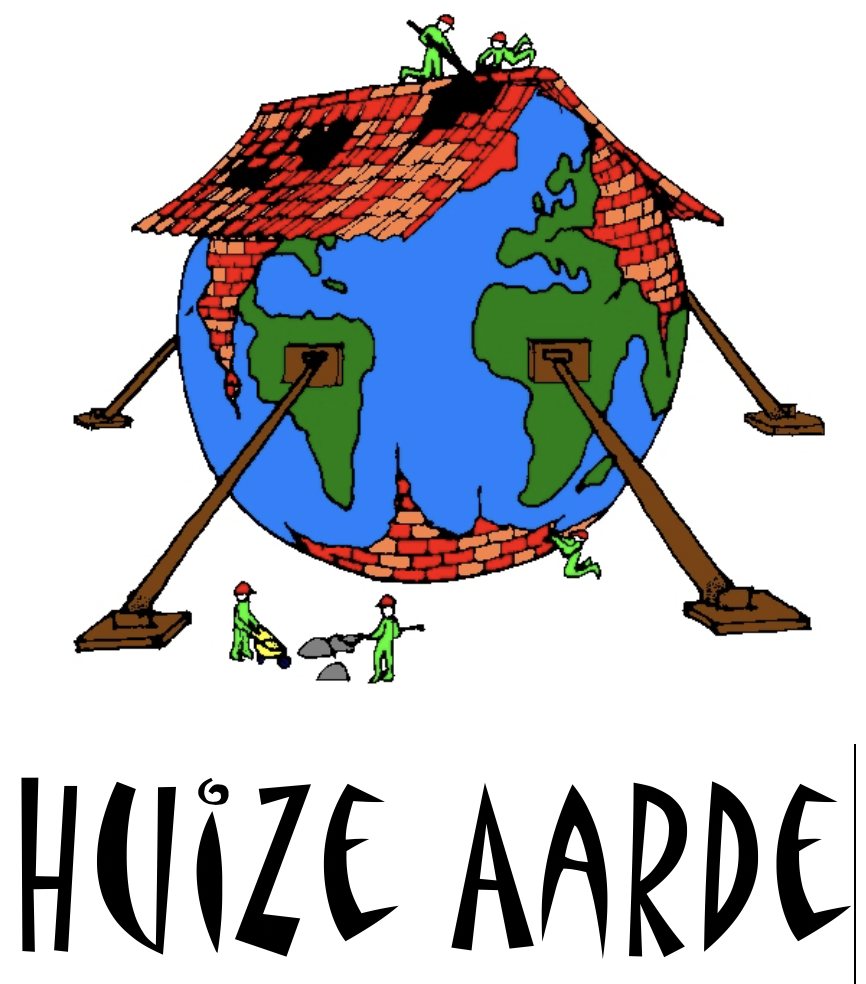MEDUWinars
On November 17th and 24th, MEDUWA young researchers presented their work on reducing pharmaceuticals and microbial resistance in the environment in the project. These presentations listed below are now available as recordings and slides (see below the respective abstract). The next webinar will be an orientation of the MEDUWA-Vecht(e) Watershed Information System. An announcement will be sent to MEDUWA stakeholders and other participants of this MEDUWinar series.
Topics presented
Abstracts, recordings and slides
About our presenters
Topics presented
Tuesday, 17 November 2020
Lara Wöhler, University of Twente, Water Management, NL:
“Alternative societal solutions to pharmaceuticals in the aquatic environment”
Martien Graumans, Radboud Institute for Health Sciences, NL:
“Oxidative treatment of pharmaceutical residues using thermal plasma activation”
Mareike Hummert, University Hospital Münster, Insititue for Hygiene, DE:
“Efficient inactivation of bacteria through Plasma-activated water (PAW)”
Tuesday 24 November 2020
Volker Lämmchen, Osnabrück University, Institute of Environmental Systems Research, DE:
“Modelling of micro-pollutants in a strongly-regulated cross-border, lowland catchment”
Gunnar Niebaum, Osnabrück University, Institute of Environmental Systems Research, DE:
“Prediction of environmental concentrations of pharmaceuticals in the Vechte River catchment using the GREAT-ER model”
Daniel Duarte, Radboud University, Environmental Science, NL:
“Human and environmental risk assessment of pharmaceuticals in the Vechte River”
Abstracts, recordings and slides
Lara Wöhler, Water Management, University of Twente, NL
“Alternative societal solutions to pharmaceuticals in the aquatic environment”
For several decades scientists have been discussing environmental contamination by pharmaceuticals. There is evidence that this pollution occurs globally, entailing risks forto both human health and the environment. This poses a societal problem as it is a result of how societies produce, apply and use pharmaceuticals. However, previous research has strongly focussed on environmental, chemical and technological aspects of pharmaceuticals in the environment, rather than societal ones. We argue that including the societal dimension into the discussion is essential, as the way society utilizes pharmaceuticals drives environmental emissions throughout the entire pharmaceutical lifecycle. Society must find a way to deal with trade-offs between improving human and animal health through pharmaceutical use and environmental sustainability.
This MEDUWinar presents results of our recent study on alternative societal solutions to human and veterinary pharmaceuticals in the aquatic environment. To this end, we adopt the multi-level perspective framework of transition research, which allows us to understand the dynamics underlying pharmaceutical emissions and recognize social and technical factors triggering change. Our qualitative analysis is based on data collected through literature research and interviews with actors from the pharmaceutical industry, and the health and agricultural sectors. The research aims at identifying potential future solutions including requirements for, as well as barriers to, pathways leading to these solutions and describing the role of key actors involved. The study results present three alternative societal solutions: 1) accepting pharmaceuticals in the environment – substantial changes to the system are not required; 2) reconfiguring the current system by implementing various innovations that reduce pharmaceutical emissions; and 3) fundamentally changing the current system to (largely) avoid pharmaceutical emissions. In the MEDUWinar we will elaborate on each of these solutions and explain societal, financial, organizational, regulatory and technological requirements that can facilitate implementation of these solutions. This work is novel as it constitutes a systemic view on all stages of the pharmaceutical lifecycle, comprehensively synthesizing options and measures along the entire lifecycle into societal solutions that are framed as transition pathways. We are looking forward to a critical discussion with MEDUWA partners, stakeholders and everyone interested in the topic on the societal dimension of pharmaceuticals in the environment!
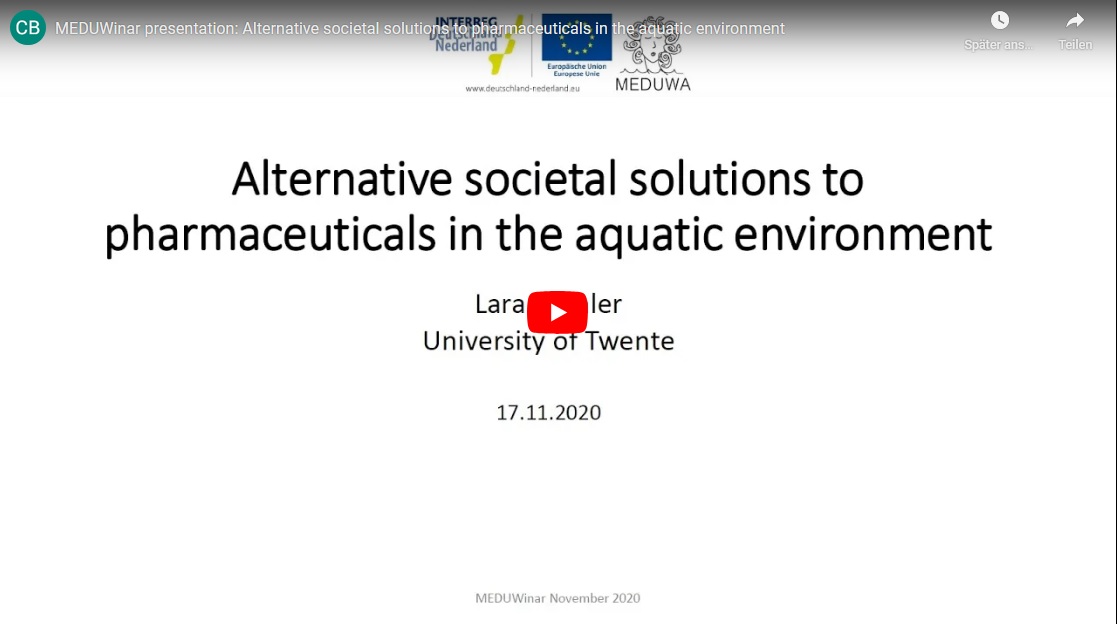
Martien Graumans, Radboud Institute for Health Sciences, NL
“Oxidative treatment of pharmaceutical residues using thermal plasma activation”
Widespread use of pharmaceuticals in human health care and veterinary applications contaminate the aquatic environment. Due to continuous discharge and poor biodegradation in wastewater treatment plants (WWTP) some pharmaceutical residues end up in surface waters. To eliminate these unwanted medicines from surface water, onsite wastewater treatment techniques may complement conventional WWTPs. Advanced oxidation processes are useful and powerful techniques to degrade medicine residues using reactive oxygen species (ROS).
To demonstrate the effectiveness of advanced oxidation, we have studied thermal plasma and UV/H2O2 treatment in a controlled laboratory setting. Five different matrices, Milli-Q water, tap water, synthetic urine, diluted urine and synthetic sewage water were spiked with 14 pharmaceuticals with a concentration of 5µg/L. All compounds were reduced or completely decomposed by both 150W thermal plasma and UV/H2O2 treatment. The applicability of this treatment for hospital sewage water was also tested, demonstrating degradation of 10 pharmaceutical residues with concentrations ranging from 0.08 up to 2400 µg/L. Since reactive oxygen and nitrogen species (RONS) are continuously produced with thermal plasma treatment, this technique has an advantage over UV/H2O2 treatment.
To demonstrate the toxicity of contaminated water before and after oxidative treatment, a cytotoxicity assay was performed. It was found that toxic by-products are formed, but that prolonged oxidative treatment has a positive effect by decreasing the toxicity of the water.
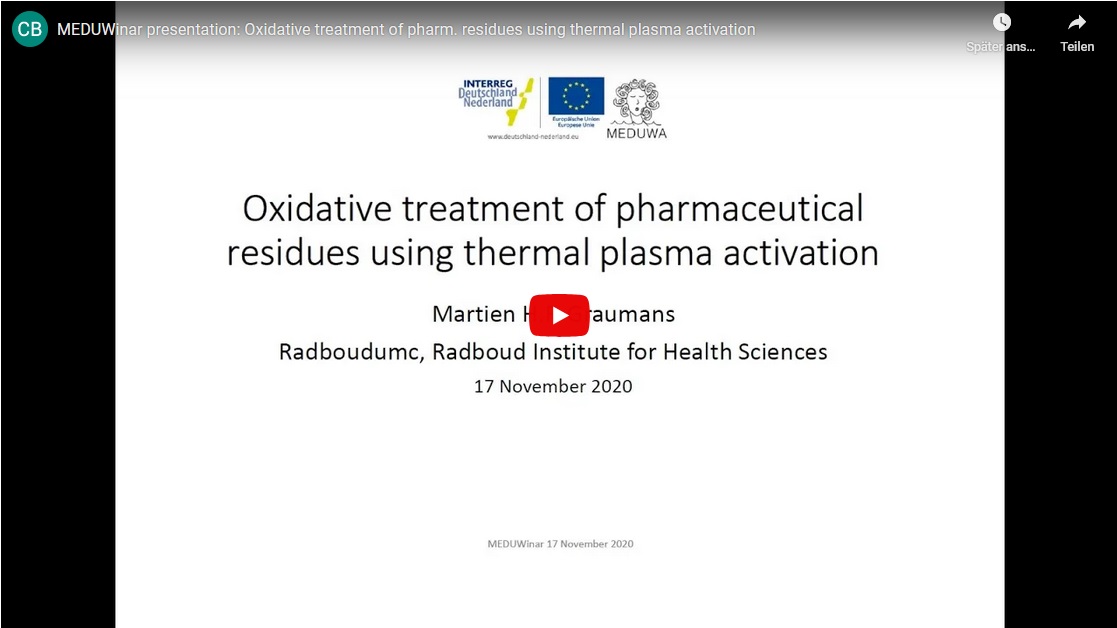
Mareike Hummert, Institute for Hygiene, University Hospital Münster, DE
“Efficient inactivation of bacteria through Plasma-activated water”
Water can be activated by exposure to non-thermal atmospheric pressure plasma*. During water activation many substances and radicals arise that are associated with a significant decrease in pH. This so-called plasma-activated water (PAW) has been proposed as a new approach to inactivating bacteria.
In this study we investigated the influence of PAW on antimicrobial properties tested with bacterial strains such as Pseudomonas aeruginosa as a waterborne pathogen, Escherichia coli as a fecal indicator and Staphylococcus aureus as a skin colonizer. Drinking water was activated by non-thermal atmospheric pressure plasma with electricity at a level of 60-120 W for 10 to 30 minutes. After the activation the PAW was used for treatment of planktonic bacterial cells. The bacteria were exposed to PAW for defined periods of between 2 and 120 minutes. After antimicrobial treatment PAW activity was stopped through the application of a neutralization solution. The effect of the PAW on the bacteria was tested through a variety of methods including standard cultivation in petri dishes, differentiation of live/dead bacteria using real-time polymerase chain reaction with propidium monoazid pre-treatment and flow-cytometry.
The post-discharge treatment was highly effective in inactivating the bacteria. The disinfecting properties of PAW were dependent on the activation conditions, the treatment time of the water, the contact time between bacteria and PAW and the number of ions in the activated liquid. Starting with 108 bacteria per mL, PAW (activated for 10 minutes at 100 W) achieved at least an 8‑decimal-logarithm-unit reduction during a 10-minute treatment. These antimicrobial properties were maintained during storage of the PAW at room temperature for at least 20 minutes. PAW has therefore proven to have a high potential for use as a disinfectant.
* Non-thermal plasmas are now commonly used in healing wounds, dentistry, improving the compatibility of transplants, among other applications.
A recording and the slides for this presentation are not publically available.
Volker Lämmchen, Institute of Environmental Systems Research, Osnabrück University, DE
“Modelling of micro-pollutants in a strongly-regulated cross-border, lowland catchment”
River basin management in densely populated regions is a difficult and challenging task. Surface waters fulfil numerous, often competing functions. The integrative goals of river basin management are characterised by the connection and combination of different aspects of water systems, such as water quality and water quantity. Integrative river basin management also requires communication and cooperation between water management and other policy domains such as spatial planning, agriculture, housing or nature conservation. River basins can then be taken as a basis for administrative cooperation as they cross administrative and geographical borders.
Since the beginning of the new millennium, the Water Framework Directive (WFD, Directive 2000/60/EC) and the European Flood Risk Directive (EFD, Directive on the assessment and management of flood risks; 2007/60/EC) are calling for this cross-border practice. In particular, the WFD strongly influences both national and regional water policy practices.
In terms of the WFD, it is necessary to move away from a zoomed out national risk assessment and focus on a more detailed, if necessary transboundary, catchment-related risk assessment. However, transboundary water systems lead to different framework conditions in administrative structures and water management systems as these have been defined by cross-border river management multiple times, as well as differences in the availability of required data. For simulations of pharmaceuticals in the environment, these aspects are further complicated by differences in consumption quantities and drug regulations. Furthermore, a considerable number of medium-sized and large rivers are part of highly anthropogenically-influenced river systems nowadays, in which numerous canals, sluices, weirs and pumps largely influence natural river flow.
Most hydrological models can only be applied to those areas to a limited extent, as they were originally developed to represent predominantly natural water bodies. Problems of model parametrization occur with strongly regulated river systems where the natural flow regime is controlled by requirements for shipping, flood control, drainage or irrigation and, as a consequence, river flow extremes are attenuated and flow dynamics are reduced.
This talk will focus on the adaptation of the existing GREAT-ER model for use in a highly anthropogenically-determined, cross-border basin. Integration of country specific input data allows for the application of the model within a case study for realistic exposure and risk assessment of the heavily-used pharmaceutical ingredient metformin. By combining water quality and quantity and human impacts in the model approach, results can effectively contribute to integrated cross-border river basin management.
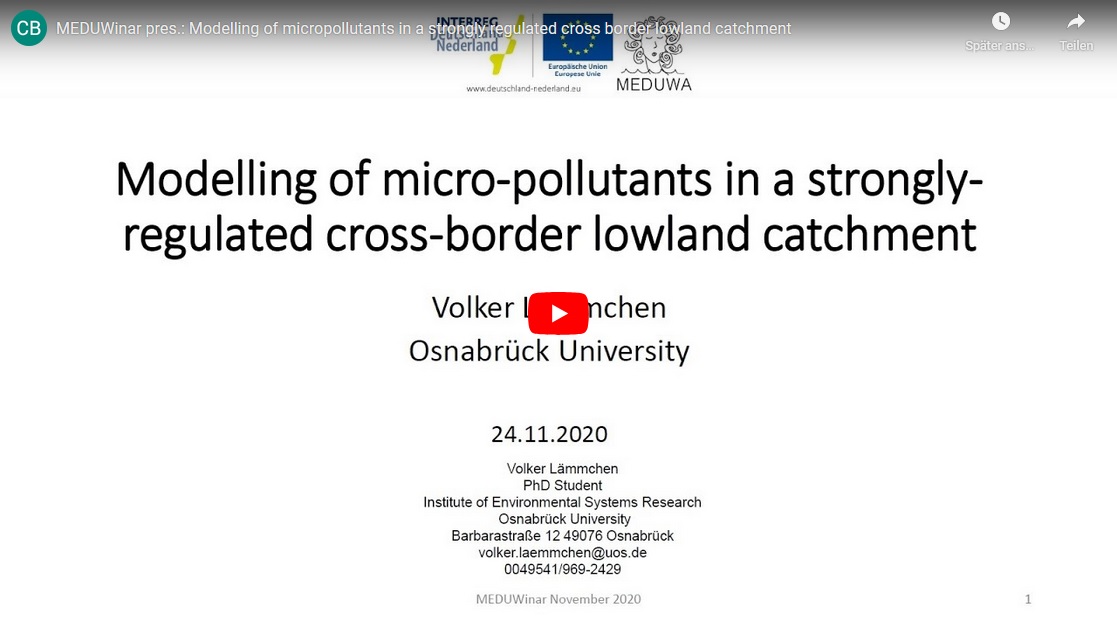
Gunnar Niebaum, Institute of Environmental Systems Research, Osnabrück University, DE
“Prediction of environmental concentrations of pharmaceuticals in the Vechte River catchment using the GREAT-ER model”
The use of pharmaceuticals has led to an increase in the quality of life of people worldwide. Due to the improved availability and increased use in recent decades, pharmaceuticals have already been detected within the entire water cycle. The comprehensive monitoring of surface waters at the catchment scale, e.g., to carry out a risk assessment, is a virtually impossible task. Models for estimating spatially-explicit concentrations of micropollutants such as pharmaceuticals are a valuable tool for predicting concentrations and identifying potential hotspots to complement monitoring.
The geo-referenced exposure assessment tool for European rivers (GREAT-ER) has already been applied in several studies to predict pharmaceutical concentrations in whole river catchments. However, MEDUWA-Vecht(e) is the first in which the model has been evaluated in a transboundary catchment area with highly anthropogenic water management strategies. Furthermore, the target compounds that have been modelled cover a variety of properties. They differ in their application frequency – both, between each other and between countries, removal efficiencies in sewage treatment plants (STPs) and their fate in the environment. Simulations were carried out for average flow conditions and low flow conditions in a dry summer scenario. The model performance was evaluated on the basis of measured values collected by the MEDUWA project partner, WETSUS, over a period of one year. Results reveal significant agreement of predicted loads with measurement derived loads for STP influent and effluent loads in both countries. In-stream concentrations were evaluated using the benchmark approach, where concentrations of target compounds are normalized by a conservative tracer, i.e. the benchmark ratio. For compounds with a detection frequency greater than 10% predicted ratios fit with measured ratios fairly well. For both the average flow scenario and the dry summer scenario, 75% of the predicted ratios deviated from the measured ratios by less than a factor of 3. We therefore consider it appropriate to conduct an exposure assessment based on the data obtained.
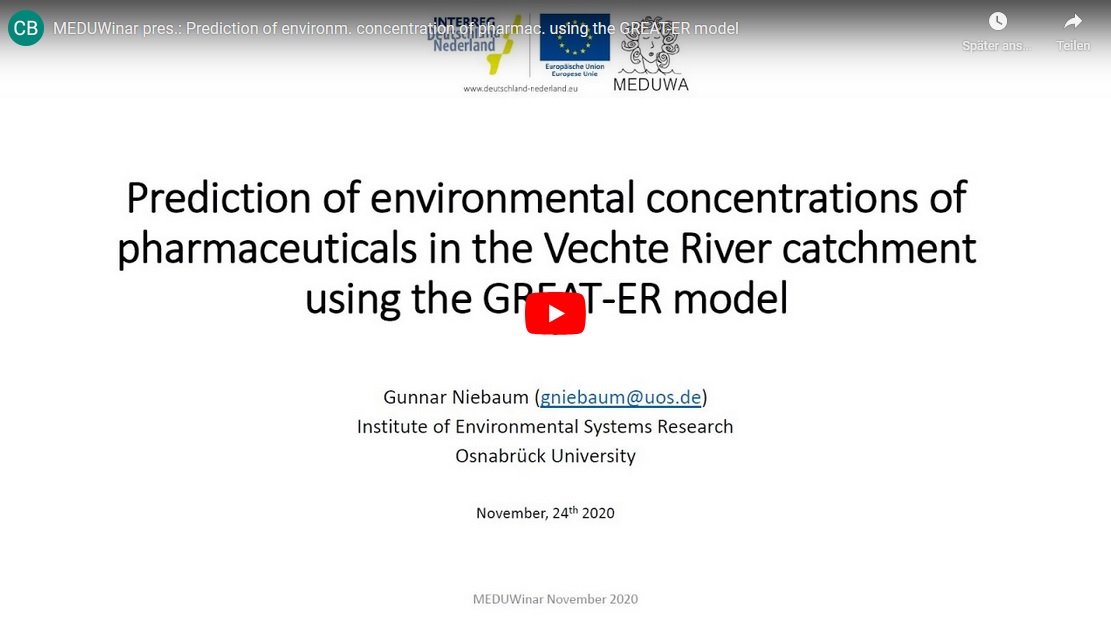
Daniel Duarte, Radboud University, Environmental Science, NL
“Human and environmental risk assessment of pharmaceuticals in the Vechte River”
Medicines are a staple of human and veterinary health care. Across the globe, these substances facilitate the treatment of numerous diseases, improving lifespan and wellbeing. Often medicines are not fully degraded by our bodies and find their way to the aquatic environment. Despite noticeable incremental research efforts, the environmental impact of medicines on aquatic wildlife and humans is still poorly understood.
In collaboration with MEDUWA-Vecht(e) partners, we generated a comprehensive assessment of the environmental and human health risks that arise from medicinal waste in the Vechte River basin. For example, we conducted a unique study where the relationship between microbial resistance to antibiotics and antibiotic concentrations measured in the environment was assessed. We furthermore quantified the human and ecological risks for a group of medicines present in the Vechte River. Our work led to three main achievements: 1) establishment of safe concentrations levels for medicines in water to protect aquatic wildlife and humans, 2) quantification of the human health risks associated with swimming, fishing and drinking water, and 3) identification of factors influencing microbial antibiotic resistance levels in surface water, sediments and wastewater. This work contributes to the (inter)national development of risk assessment tools in the field of medicines in the environment. Furthermore, it provides valuable information to institutions with different interests and stakes in the improvement of environmental quality and public health strategies (e.g., governments, companies, NGOs, academia).
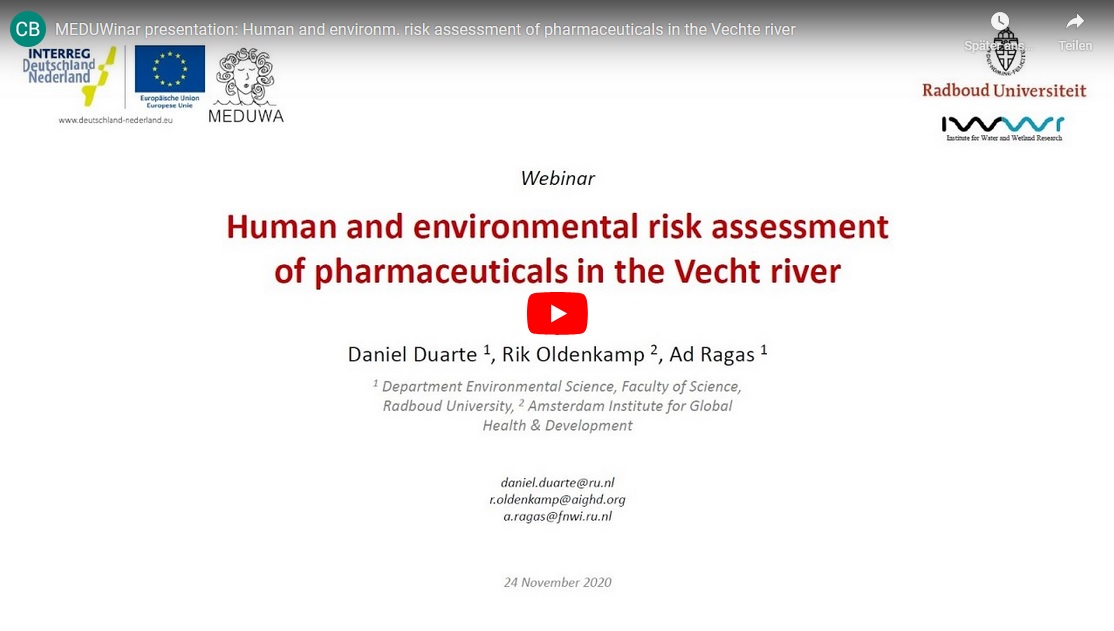
About our presenters
 Lara Wöhler
Lara Wöhler
Lara Wöhler is a transdisciplinary researcher studying various dimensions of pharmaceuticals in the environment. She holds a bachelor’s degree in environmental and spatial science from Leuphana University in Lüneburg and a master’s in water resources engineering from Karlsruhe Institute of Technology. After having a research position at the Fraunhofer Institute for Systems and Innovation Research, Lara started her PhD in the water management group of the University of Twente. She looks at experimental research on degradability of pharmaceuticals, modelling pharmaceutical emissions and policy analysis to regulate emissions. One major part of her PhD consists of emissions modelling from different sources and interpreting these with help of the grey water footprint indicator. In addition to that, she is interested in approaching the topic from a societal viewpoint, which she will discuss in the MEDUWinar.
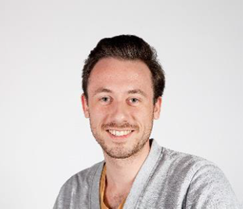
Martien Graumans
Martien Graumans studied chemistry from 2008 to 2012 at Avans University of Applied Sciences in Breda, the Netherlands and for a Master of Research in Forensic Science from 2012 to 2014 at King’s College London at the University of London in the School of Biomedical Sciences, Department of Forensic Science & Drug Monitoring. He also graduated from the Utrecht University with a Master of Science degree in Toxicology and Environmental Health. Currently he is a PhD Candidate studying oxidative treatment of pharmaceuticals in (waste) water in the context of the MEDUWA-Vecht(e) project.
Mareike Hummert
Mareike Hummert studied biochemistry from 2009 to 2014 at the University of Bielefeld and from 2014 to 2017 at the Ernst-Motitz-Arndt University Greiswald. From 2017 to 2020 she worked in the MEDUWA-Vecht(e) project at the Institute of Hygiene at the University Hospital Münster to complete her PhD in Biology at Westfälische-Wilhelm University Münster. Her research focuses on the inactivation of bacteria through plasma-activated water.
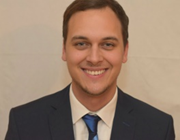
Volker Lämmchen
Volker Lämmchen is doing his PhD at the Institute of Environmental Systems Research at Osnabrück University as part of the MEDUWA-Vecht(e) project. He holds a Bachelor’s degree in Business Administration (University of Applied Sciences Emden) and a Master’s degree in Environmental Systems and Resources Management from the Osnabrück University. His research focuses on the fate of pharmaceuticals in river systems, working closely together with water authorities and national ministries, combining tasks from geoinformatics, mathematical and computer-based modelling to answer his research questions.
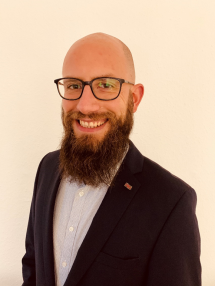 Gunnar Niebaum
Gunnar Niebaum
Gunnar Niebaum is undertaking his PhD at the Institute of Environmental Systems Research at Osnabrück University as part of the MEDUWA-Vecht(e) project. He holds a Bachelor’s degree in Applied Systems Science and a Master’s degree in Environmental Systems and Resources Management from the Osnabrück University. His research focuses on the fate of pharmaceuticals in river systems and the influence of human activities on bacteria concentrations in surface waters. Through his transdisciplinary work in the fields of hydrology, exposure assessment and chemical fate, he collaborates with other research institutions, authorities and water agencies. To address his research questions, he uses mathematical and computer-based models for load and fate estimations. The results of the GREAT-ER model will be presented at the MEDUWinar.

Daniel Duarte
Daniel Duarte is an environmental scientist focused on researching the unintended consequences of pharmaceuticals in the environment and their relationship with antimicrobial resistance, currently in the context of the MEDUWA-Vecht(e) project. He has previously worked as a liaison officer, policy assistant, research assistant and consultant for public and private institutions. Daniel holds degrees in Molecular and Cell Biology (BSc) and Environmental Contamination and Toxicology (MSc). He plans to be granted a PhD degree in early 2022 for his scientific research.
